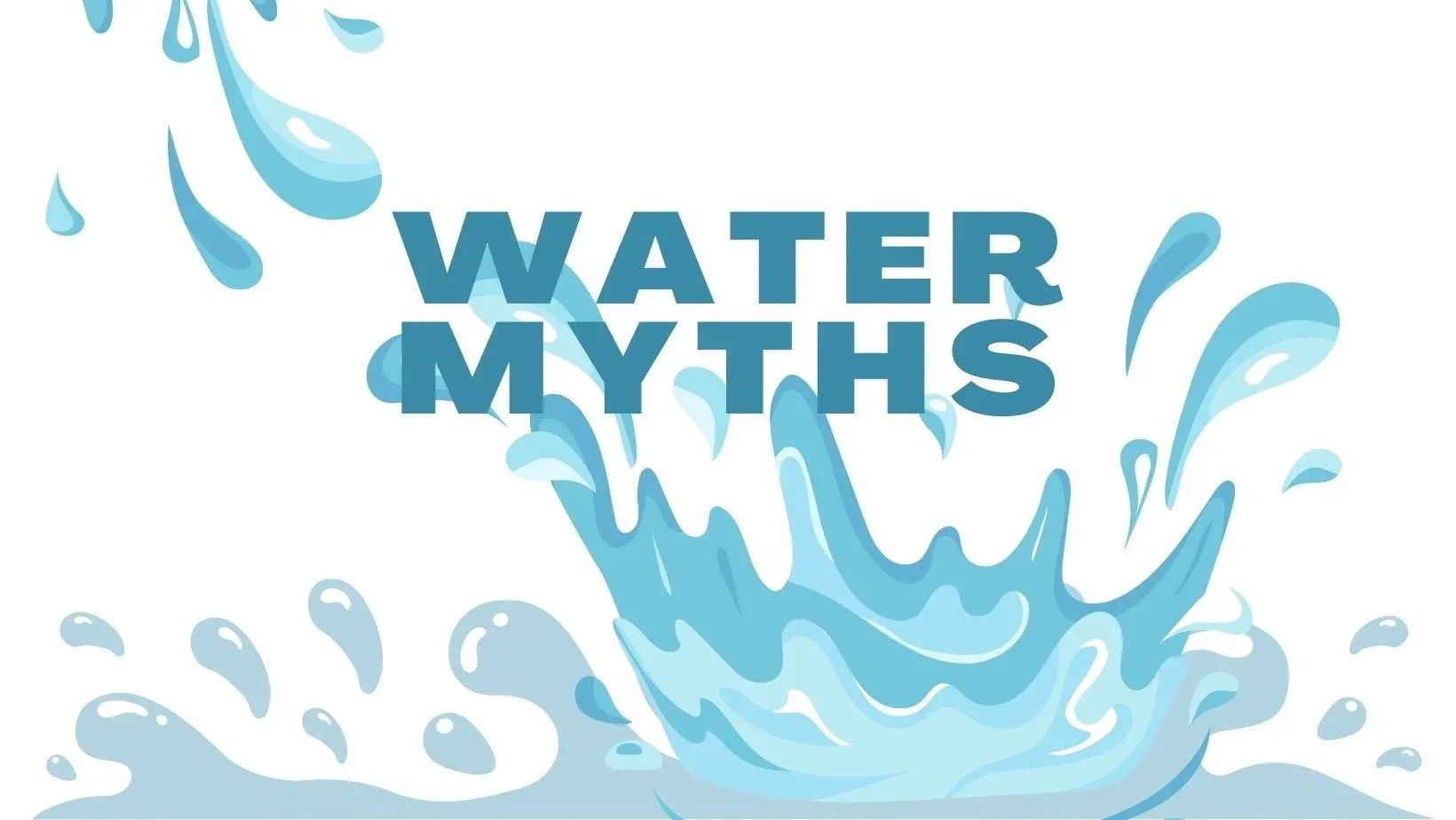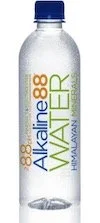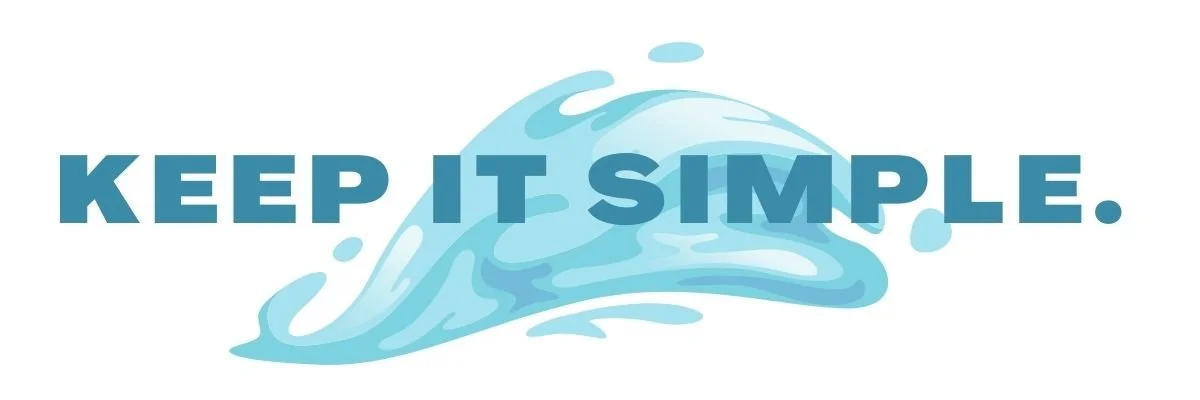Water Myths
Like an unsinkable rubber duck, water myths and fads continue to pop up every few years.
I knew we were in the latest round of a water fad when I recently saw someone carrying one of these bottles:
This is a one gallon water bottle, about the size of a toaster, that people carry around with them all day with the goal of finishing the bottle by the end of the day. I think the kernel of this latest water fad is the “75 Hard” challenge, of which one of the hard daily tasks is to drink a gallon of water for 75 days straight.
As you can see from the motivational phrases on the bottle, the act of drinking water is seen as a difficult but worthy sacrifice (“Remember your goal” / “Don’t give up”). This implies that you could be healthier and fitter if only you’d toughen up and drink your water. This is wrong on so many levels, which means it’s time to dust off the old water facts and get some clarity.
Myth 1. You need to drink 8 glasses of water a day, and the more you drink, the better.
Growing up we were all told the amount of water needed to be healthy was 8 glasses (that’s about a half gallon, or 2 liters). This factoid sprang from 1940’s research that tracked how much water the body actually uses in a day, which is about 2 liters.
But there’s a huge difference between, “the body uses 2 liters of water a day” and, “you need to drink 2 liters of pure water a day.” You get water from all kinds of sources. If you eat an apple, you’ve just “drunk” a third of a cup of water. We get a large amount of our daily water from the foods we eat. The body doesn’t know that the water came from a bowl of rice or a Fiji water bottle. It’s all just H20. Most people in the course of normal eating and drinking will easily reach the 2 liter mark. A clean diet of whole foods will make this even more foolproof.
Of course there’s nothing better than a tall, cool glass of water. By all means, drink as much water as you like. But you don’t need to force water down or hit an arbitrary amount like 8 glasses, or a gallon, to be a fitter, healthier person.
Myth 2. Other liquids like coffee, tea, and alcohol are diuretic, and don’t count towards daily water intake.
A diuretic compound is anything which draws water out of the body (usually through activating different hormones which interact with the kidneys). Caffeine, for example, is part of the methylxanthine group, which when consumed, inhibits the kidneys from absorbing water, making you urinate more and lose fluid. That sounds bad, doesn’t it?
It WOULD be bad, if you were drinking a steaming cup of pure caffeine every morning. (In fact, if you were to somehow consume a cup of pure caffeine dehydration would be the least of your worries, as you’d quickly be dead from ventricular fibrillation leading to cardiac arrest. 10 grams [about 2 teaspoons] of pure caffeine is a fatal dose.)
Fortunately, in a cup of coffee of tea, there are miniscule amounts of caffeine, between 50 and 150 milligrams depending on the strength of your brew. The rest is some trace amounts of oils, tannins, and of course, water. A cup is about 240,000 mg, meaning that for every 1 mg of diuretic caffeine, you’re getting 2400 mg of hydrating water. The water easily wins this battle. A cup of tea or coffee is very hydrating! And remember, for tea this caffeine issue only applies to “real” tea, and not herbal blends which don’t have any caffeine at all.
Alcohol can be trickier. Alcohol is also a diuretic, but just as with coffee, in beer and wine, the alcohol is so diluted that you still come out ahead in terms of hydration. But when you get into 80 and 100+ proof liquors where up to 70% of the drink is alcohol, you’re starting to break even in terms of hydration. So yes, if all you drank for your daily fluid was the hardest of hard liquors, then and only then would you have to worry about hydration issues. Of course, just as with caffeine, you’d have much bigger problems at that point!
Long story short, if you’re drinking normally, some tea, some coffee, some plain water, some juice, beer, or wine, you’re contributing to your hydration.
In no world is “I just drank a cup of coffee, I’m so dehydrated now” a thing. What people get confused about is that the tannins and caffeine in tea and coffee can cause the mouth to feel dry, which is confused for dehydration.
Myth 3. Drinking a lot of water flushes your body of toxins.
Water certainly plays a part in cleaning up toxins, but the heavy lifters here are your liver and kidneys. As blood passes through these organs, sophisticated scrubbers molecularly cleave apart the good and the bad stuff. The good stuff is packaged up and sent to the parts of the body that need it, and the bad stuff goes to the colon and bladder to be excreted later.
Blood is about 90% water, so in this sense, yes, water is a part of this process. But you only need enough hydration to get normal blood volume. Anything over that doesn’t aid the toxin-clearing cause.
A good analogy is to think of your liver and kidneys like a sponge you use for washing a dirty pan. After you finish scrubbing, the sponge has some oil and food matter on it, right? So you run the sponge under some water and squeeze out the grime. At a certain point the sponge is as clean as it’s going to get. No amount of extra water is going to help clear out further “toxins”. If anything, you’ll just be wearing out the sponge by continuing to soak and squeeze it.
In the same way, if you’re meeting your daily water needs (which normal eating and drinking will do), your toxin-clearing process will work wonderfully. Extra water doesn’t make it work any better, and in extreme overconsumption the liver and kidneys can be harmed by overhydration.
A big contributor to this myth is likely the way your pee becomes clear when you drink a lot of water. It just ~feels~ like you’re getting “cleaner” when you see a toilet bowl full of crystal-clear urine. This isn’t the result of being toxin free, it’s just that your normal amount of waste material has been diluted into a larger reservoir of liquid.
If your urine is a tawny color (about the color of straw), you’re properly hydrated. There’s no benefit to loading up on water in an attempt to get cleaner urine. If your urine is a darker yellow, it doesn’t mean anything is wrong, it just means you should drink something.
Myth 4. Drinking a lot of water gives you healthy skin.
This is related to the toxin idea above. We’re used to the concept of water coming out of our skin through sweat. So it stands to reason that the more you drink, the more flushes your skin gets, and the healthier it will be. There’s no scientific evidence this is true, and no physiological pathway that would make it true. But people really dig into this myth and defend it strongly, because when they start drinking more water they often see clearer, healthier skin in the mirror.
What people miss is that usually a focus on drinking more water comes alongside a host of other lifestyle changes, including eating more nutritiously, cutting out junk food and alcohol, and exercising more. THOSE things will most certainly make skin look better, but water gets all the credit.
Another subtle trick is that when you're stuffing yourself with water, your skin can become bloated. Bloated skin will be puffy and can diminish the appearance of wrinkles, which is interpreted as a young, healthy glow. But as soon as hydration returns to normal the effect dissipates.
The bottom line: if you want healthy looking skin, live a healthy life, avoid junk food and alcohol, and stay out of the sun!
Myth 5. Drinking a lot of water makes you lose weight.
Many people use excess water consumption as a weight loss technique. This has nothing to do with any qualities of water. Here’s what’s actually happening:
First, you can fool hunger hormones (for a while) by artificially stuffing your stomach with water. We did a deep dive into this anatomy in this Kenzai Pulse article, but to sum up, some of your hunger hormones are triggered by how stretched out the stomach is. So if you’re full of water, you feel less hungry. The problem is there are many other backup systems which will soon undermine this approach, and normal hunger will return with a vengeance.
Second, when you’re drinking water all day, you’re giving your mouth something to do. You’re going through the actions of drinking and swallowing with no caloric impact. This simple act of keeping the mouth busy makes a big difference in reducing snacking and cravings.
This all might sound like an argument to use the excessive-water-drinking-technique to lose weight, but consider this — you can get exactly the same results by eating fresh, wholesome fruits and vegetables. Fruits and vegetables are already mostly water, and will also give you nutrients, fiber, and a full feeling that’s based on actual food. This is a much more pleasant and sustainable way to approach fat loss than forcing liters of water down your throat and needing the bathroom every 30 minutes.
Myth 6. Water can be improved to be even healthier.
Every year a new twist on water comes out, and they fall into a few categories, none of which make water any healthier or better for you.
Category 1 - Purer, more natural water.
This category leans on the idea that “natural” water that comes from springs, glaciers, volcanic filtered rocks, alpine lakes, and so on, is better than the gross industrial water that comes out of the tap. There are a few problems with this. First, studies have shown that fancy bottled water is no cleaner or purer than tap water. Often, bottled water with a nice natural-sounding name is just municipal tap water put into a fancy bottle.
For example, VOSS water isn’t collected from a glacier in Voss, Norway, but from the municipal water supply of Iveland, 400 kilometers away. People in Iveland literally have VOSS water coming out of their taps!In another example, Fiji water once ran a campaign about how unlike other waters, it wasn’t “bottled in Cleveland”. The city of Cleveland took offense at this, and ran a test of Cleveland water vs. Fiji water. Fiji was found to contain 6.31 micrograms of arsenic per liter, while Cleveland’s water had none. In fact, many city water supplies have much more stringent filtration and testing than bottled water, and are healthier in this sense.
Most people’s objections to tap water is about taste. A basic charcoal water filter will take care of this problem simply, and without the huge carbon footprint of packing and shipping water around the world.
Category 2 - “Smart” water with vitamins and minerals.
This category takes the opposite approach of clean, natural water, and says “With science we can make water better!” The producers then put in their proprietary blend of vitamins, minerals, and electrolytes, promising health benefits. There’s no evidence to suggest that this has any health benefits. There IS a great deal of evidence that shows the body prefers to extract vitamins and minerals from real food, not in liquid form. When taken in liquid or pill form, many vitamins and minerals have low bioavailability and pass through the system without being used.
As far as electrolyte drinks like Gatorade, the only time you’d want to replenish electrolytes (which are just salts) is in the context of extreme exertion (as in the case of professional athletes who advertise it). In the course of a normal day, you replenish your electrolytes through normal eating.
Category 3 - Alkaline waters
In recent years, the cool new water trend has been to discuss alkalinity. Water has a pH of 7, exactly neutral. Fancy waters now sell themselves as being extra alkaline, which is vaguely implied to help balance out the body’s acidity and make you healthier.
As discussed in this Kenzai Pulse article, the body has a very strong homeostatic balancing system to maintain the correct internal pH to sustain life. There’s simply no way drinking a bottle of alkaline water will change the acidity of the body. If that were true, we’d never have survived the evolutionary pressures of life on Earth.
Alkaline waters rely on you to make a simple logical mistake. “Acid is bad. I don’t want to have acid in my body. This water is the opposite of acid. Therefore it will help me become less acidic.” The truth is, your body is way smarter than you, and employs both acids and bases in the correct time and place to keep you alive. Trust it and don’t bother with the alkaline food and drink trend.
You’ll notice a pattern in all these new, improved water ideas. They’re all built around getting you to pay more for water and ignore the perfectly good water you have at home. Don’t give your hard-earned money to water grifters who are scamming you.
Fitness can be confusing and complicated. But water and hydration are wonderfully simple. When it comes to water, take the win. You don’t need to overthink your water consumption.
Here’s how to get it right:
Start the day with a glass of water. You lose water all night as you sleep. Top-up when you wake up.
Drink when you’re thirsty. Your thirst instinct is finely tuned to hydrate you correctly.
Listen to it. Note that as we enter old age (70s and up) this instinct becomes less precise and it becomes more important to have regular fluid uptake, such as having some water every few hours, even when not thirsty. But for normal, healthy people, thirst can be your compass.
Your go-to hydration meter is your urine. If it’s a tawny yellow you’re in the right zone. If it’s dark yellow then don’t worry, just have a drink of water. Crystal clear urine is not a sign of “bonus” hydration and doesn’t get you any fitness points.
The healthier, fresher, and cleaner your diet, the more water you’ll be getting through your food inputs. It’s a fantastic way to stay hydrated without trying. If your diet is relying heavily on packaged, processed foods then you’ll likely need to have a few extra glasses of water a day, but even then the H20 deficit is easily made up.
Regular tap water is fine for nearly everyone (unless you’re living in a place with plumbing infrastructure issues). Use a charcoal filter (such as a Brita pitcher) for better taste. Bottled water isn’t better and is often worse.
That’s it! There are a lot of details to get right when you want to shape up. Water isn’t one of them. Raise a glass (not a gallon) to that!












